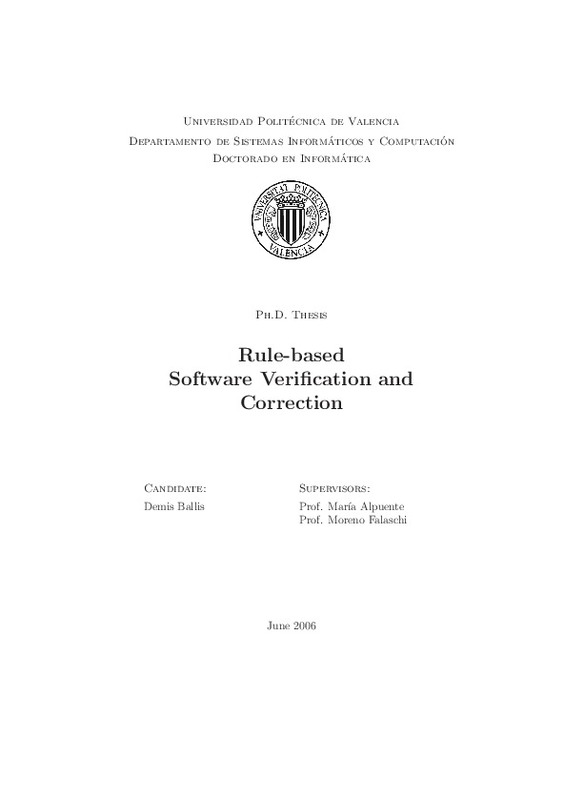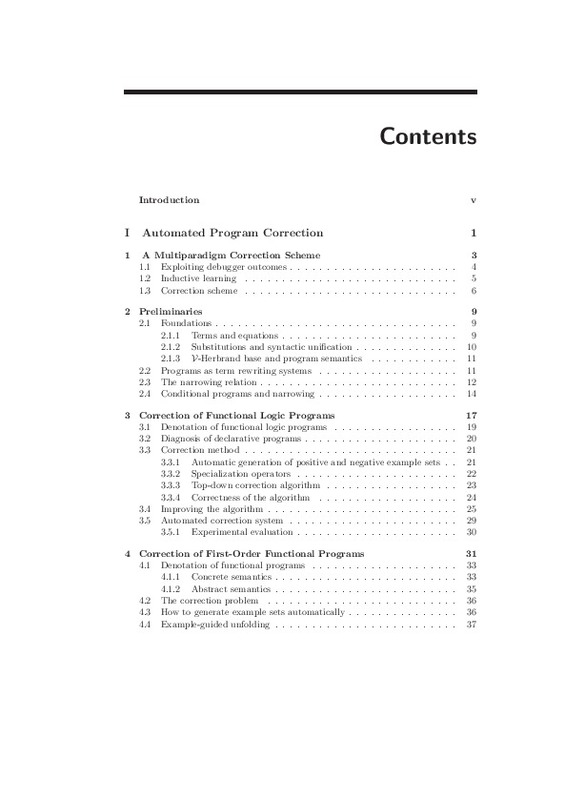- RiuNet repositorio UPV
- :
- Investigación
- :
- Tesis doctorales
- :
- Ver ítem
JavaScript is disabled for your browser. Some features of this site may not work without it.
Buscar en RiuNet
Listar
Mi cuenta
Estadísticas
Ayuda RiuNet
Admin. UPV
Rule-Based Software Verification and Correction
Mostrar el registro completo del ítem
Ballis, D. (2005). Rule-Based Software Verification and Correction [Tesis doctoral]. Universitat Politècnica de València. https://doi.org/10.4995/Thesis/10251/1948
Por favor, use este identificador para citar o enlazar este ítem: http://hdl.handle.net/10251/1948
Ficheros en el ítem
Metadatos del ítem
| Título: | Rule-Based Software Verification and Correction | |||
| Autor: | Ballis, Demis | |||
| Director(es): | Falaschi, Moreno | |||
| Entidad UPV: |
|
|||
| Fecha acto/lectura: |
|
|||
| Resumen: |
The increasing complexity of software systems has led to the development of sophisticated formal Methodologies for verifying and correcting data and programs. In general, establishing whether a program behaves correctly ...[+]
|
|||
| Palabras clave: |
|
|||
| Código UNESCO: |
|
|||
| Derechos de uso: | Reserva de todos los derechos | |||
| DOI: |
|
|||
| Editorial: |
|
|||
| Tipo: |
|
recommendations
Este ítem aparece en la(s) siguiente(s) colección(ones)
-
Tesis doctorales [5452]







![Text file [Text]](/themes/UPV/images/text.png)



